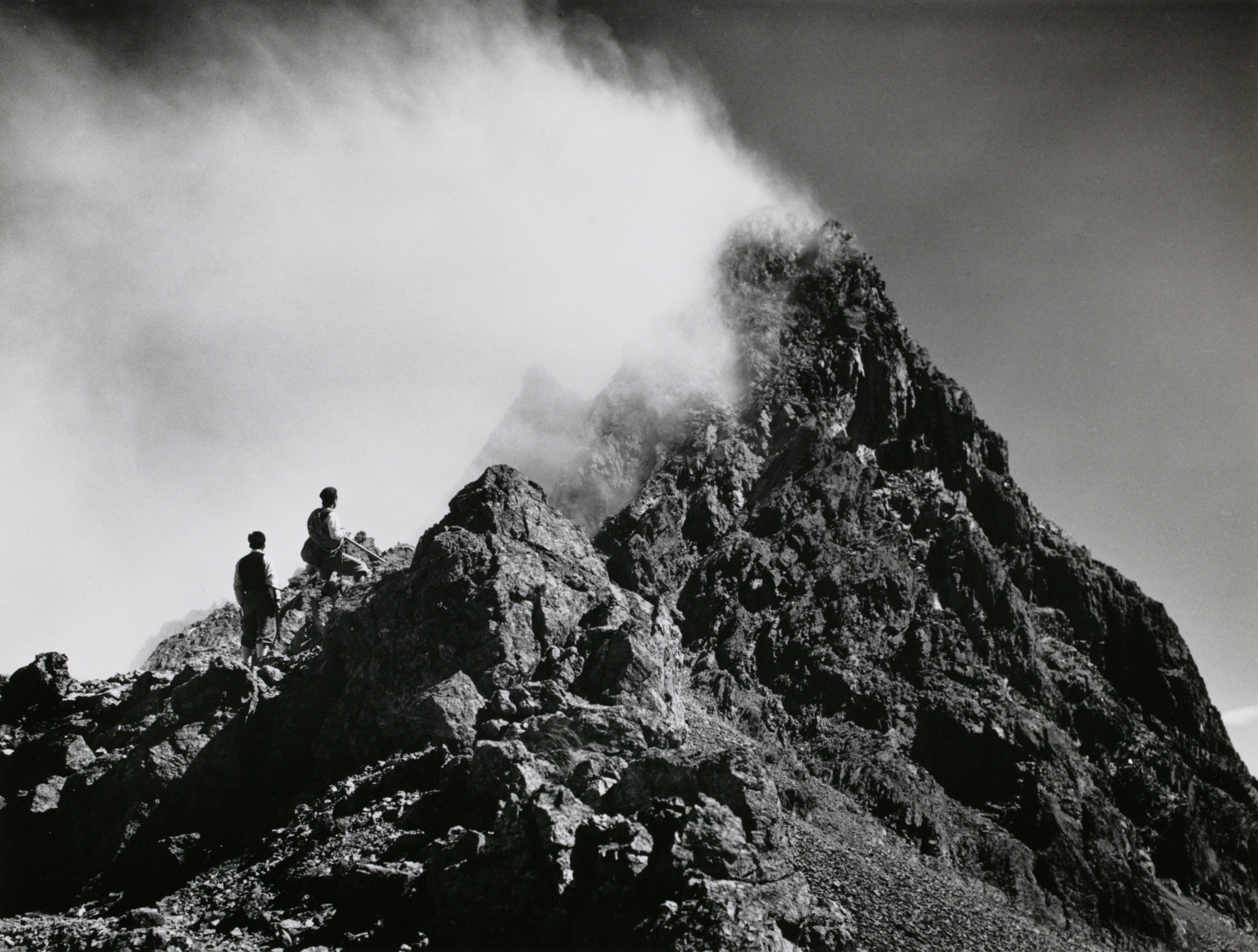Although Japanese have long gone into the mountains on spiritual pilgrimages and to gather food, fuel and medicinal herbs, it was only in about 1900 that mountaineering emerged in Japan as a recreational pursuit. Within a decade or so, all the important peaks had been climbed and mountaineers turned to more difficult ascents in unknown territory.
"Valleys and Peaks," which runs alongside the Shimooka Renjo exhibition at the Tokyo Metropolitan Museum of Photography, introduces the stunning alpine photography of Matsujiro Kanmuri (1883-1970), who broke new ground with his climbs in the Kurobe Gorge of Toyama Prefecture and Misuo Hokari (1891-1966), who worked to make mountaineering more accessible.
Kanmuri was initially reluctant to take a camera into the mountains, fearing that he'd get so focused on taking pictures that he'd fail to appreciate the nature. But his first view of the Kurobe River from the top of Mount Tate changed his mind; he wanted others to see the beauty of the mountains. Although photographic equipment then was heavy and cumbersome, he began to carry cameras on all his trips. He composed beautiful views of peaks and valleys, characterized by his skillful use of natural light. Some of his photographs capture scenes that were lost forever when parts of the gorge were flooded in 1961 to accommodate a hydroelectric plant.



















With your current subscription plan you can comment on stories. However, before writing your first comment, please create a display name in the Profile section of your subscriber account page.